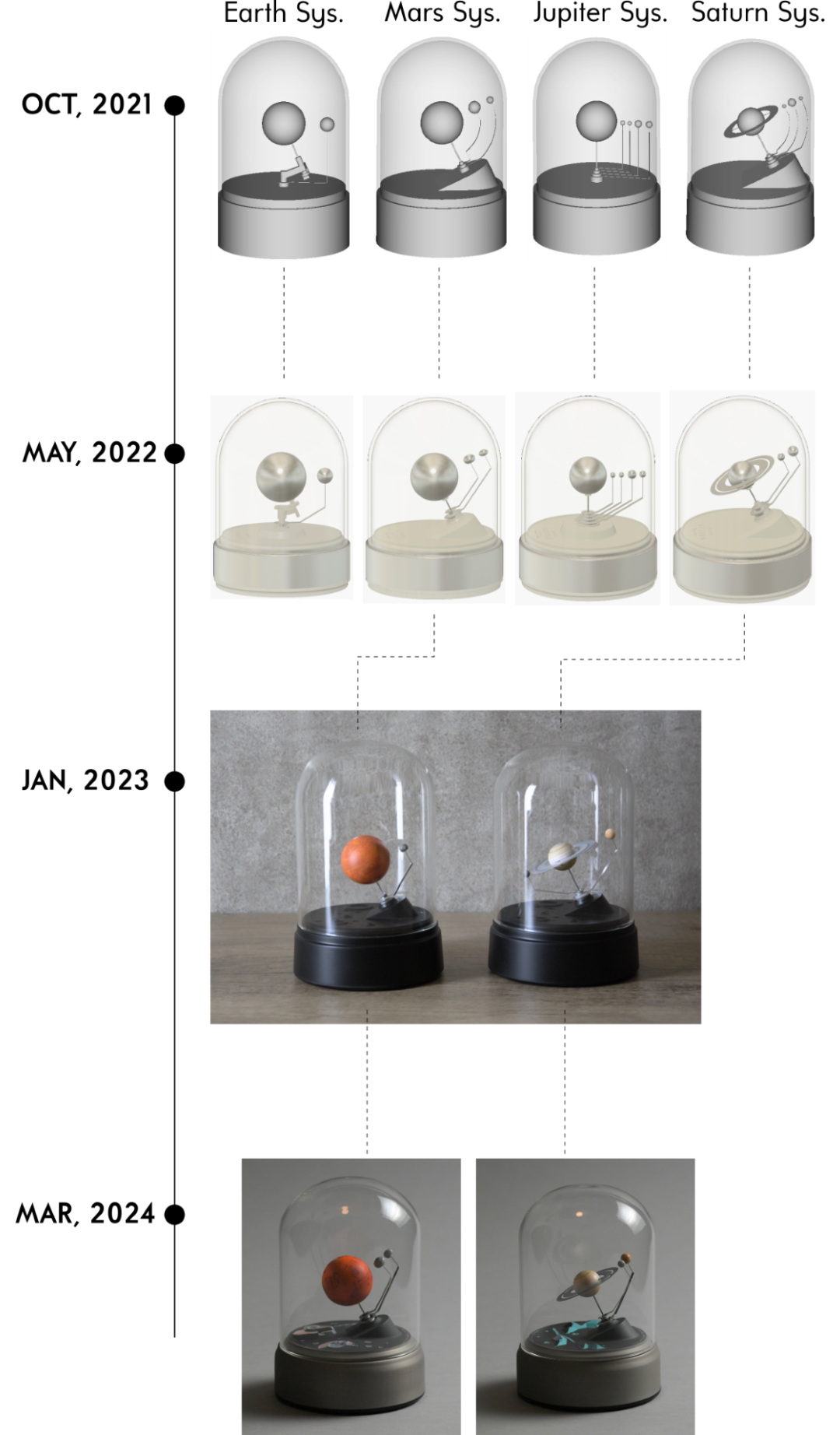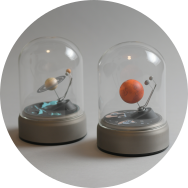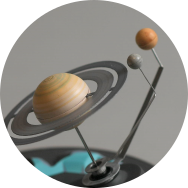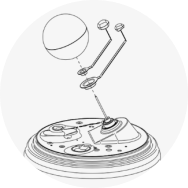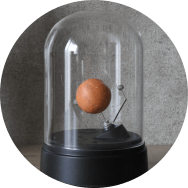Moons Landscape
Revolving models of astronomical objects based on the theme of moon systems
Kickstarter ended
What is Moons Landscape ?
Moons Landscape is an astronomical model in the form of a planetarium—a little slice of the solar system, a planet and its moons, captured under a Glass Dome—designed to serve as a calming presence in your everyday life.
This diorama-style model envisions a scene with a planet and its moons revolving above a moon relief, depicted as if seen from that moon.
It operates using a clockwork mechanism and is therefore quiet, cordless, and can run for more than six months wherever you wish to place it.
Two variants avairable, a Mars system model and a Saturn system model.
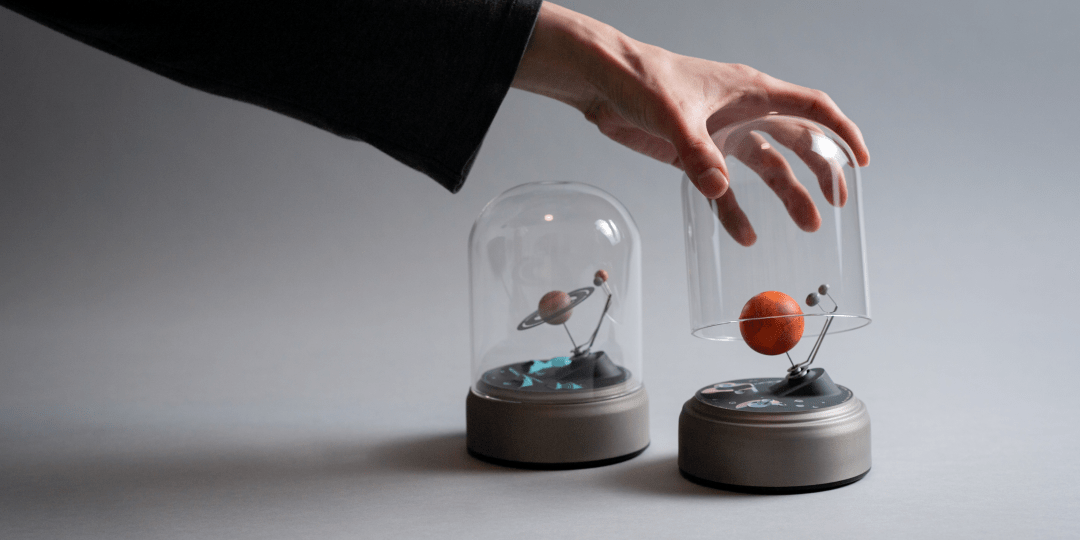
A new astronomical model based on moon systems
Astronomical models include globes of the Earth and other planets, mainly intended as maps, as well as orreries, which recreate the motion of the astronomical bodies depicted.
Moon Landscape is a unique astronomical model that consists of a map of a planet and its moons with orrery-like motion—a hybrid globe and orrery.
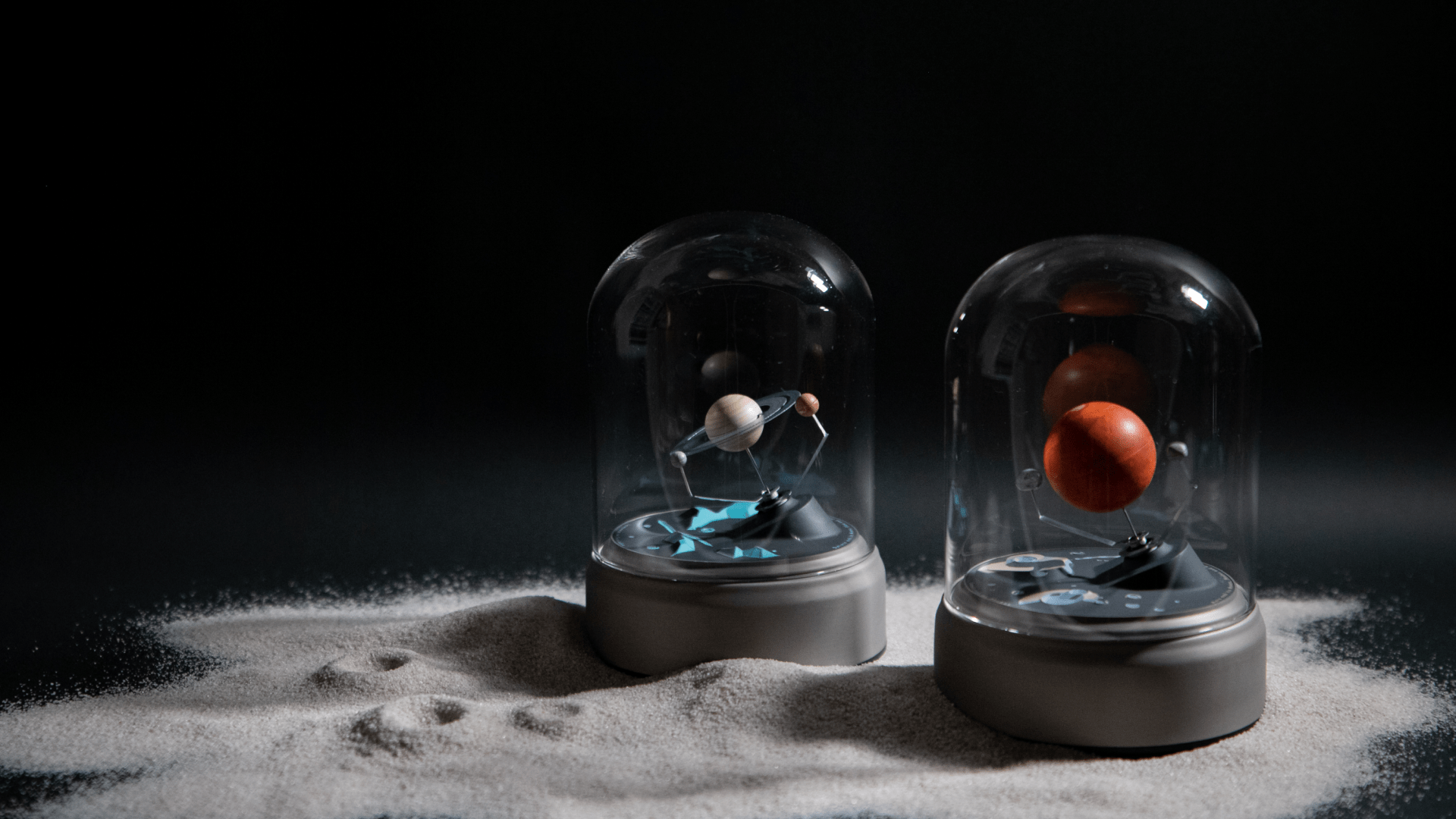
The three elements
| Planet: | The central body of the moon system. It rotates along an axis at a 25° tilt. |
|---|---|
| Moons: | The moons that form the rest of the system. They revolve around the planet. |
| Relief: | A relief that recreates the surface of a moon. |
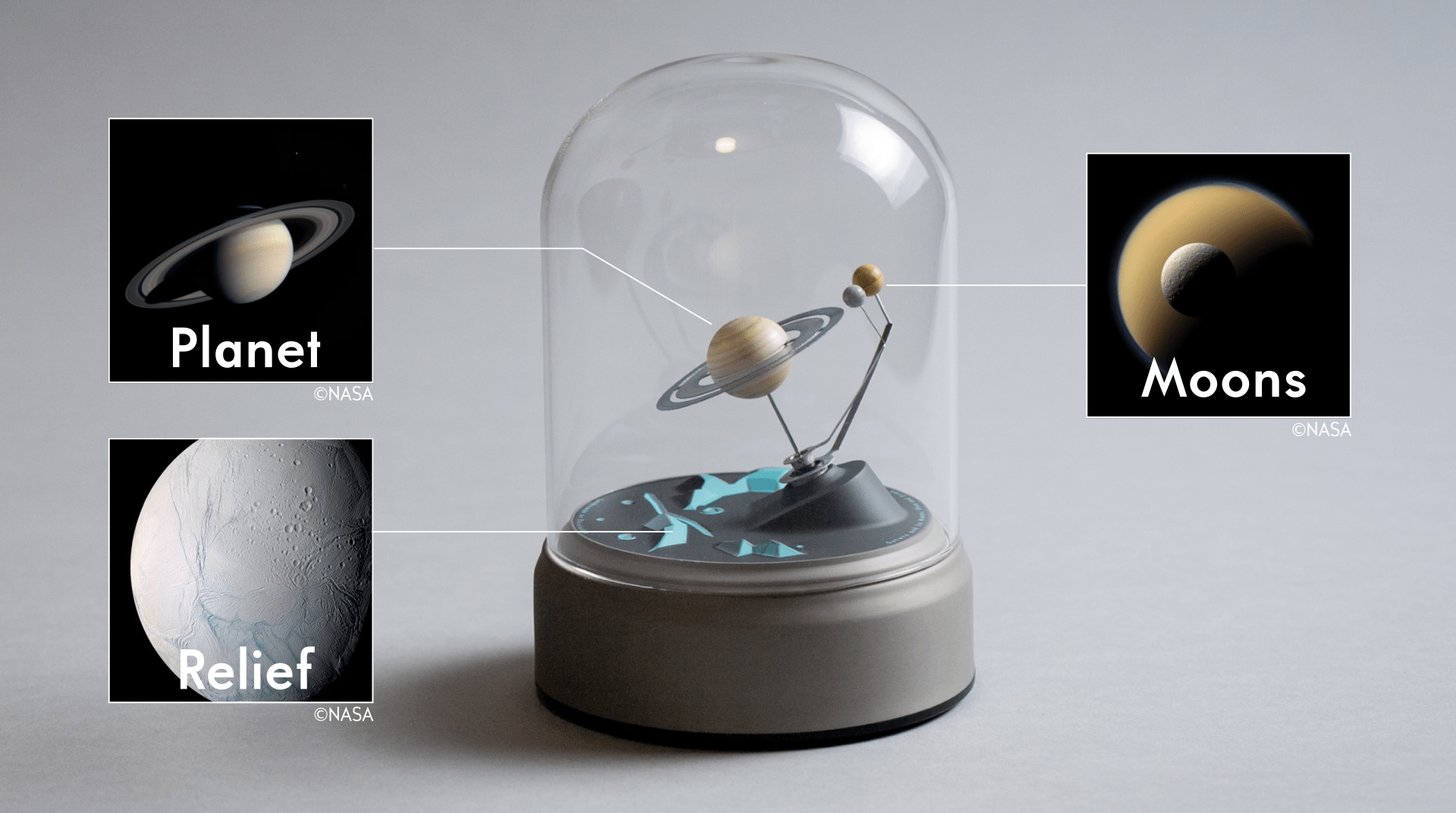
Planet | A compact-yet-detailed planetary model
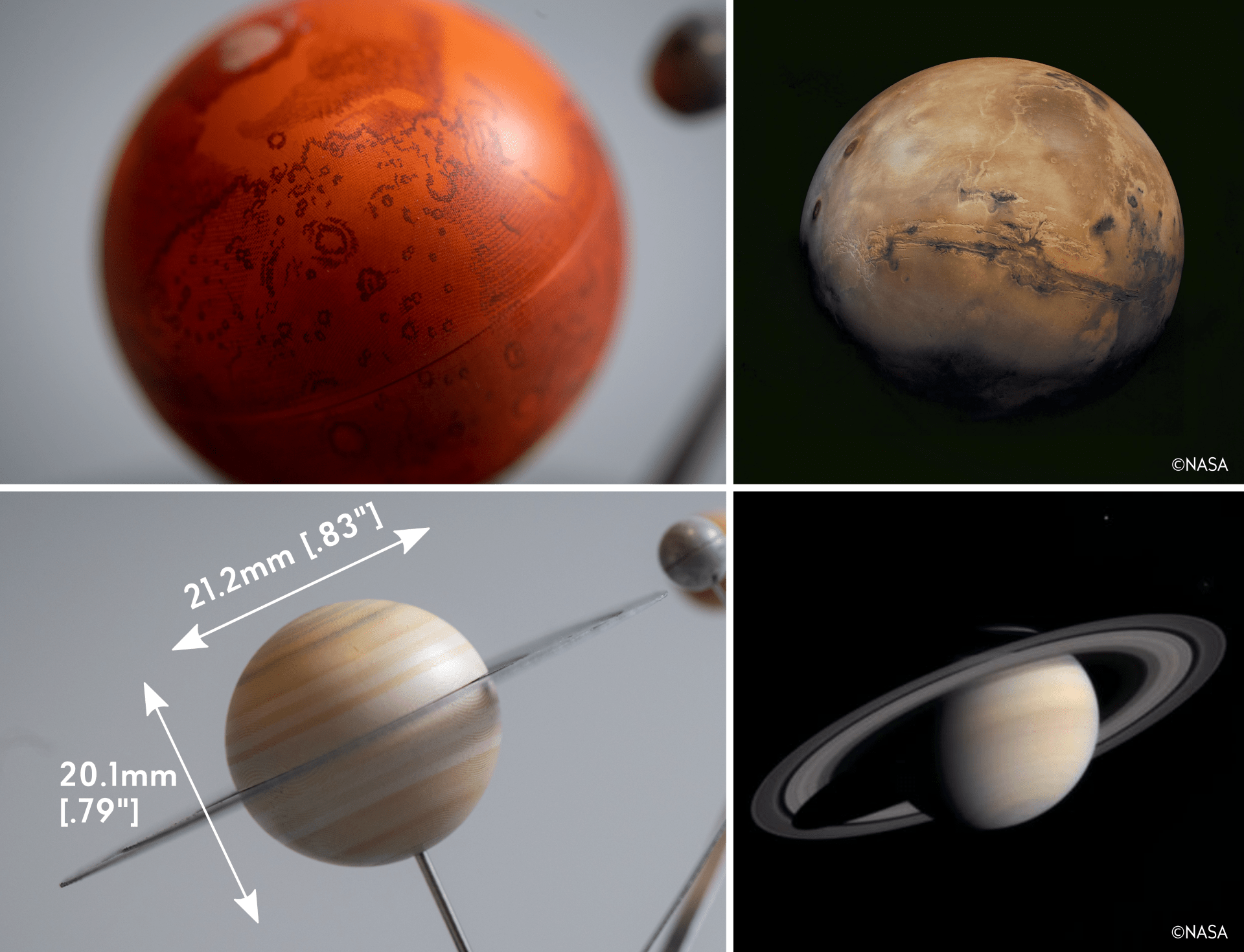
Mars & a slightly flattened spherical shape to match that of Saturn
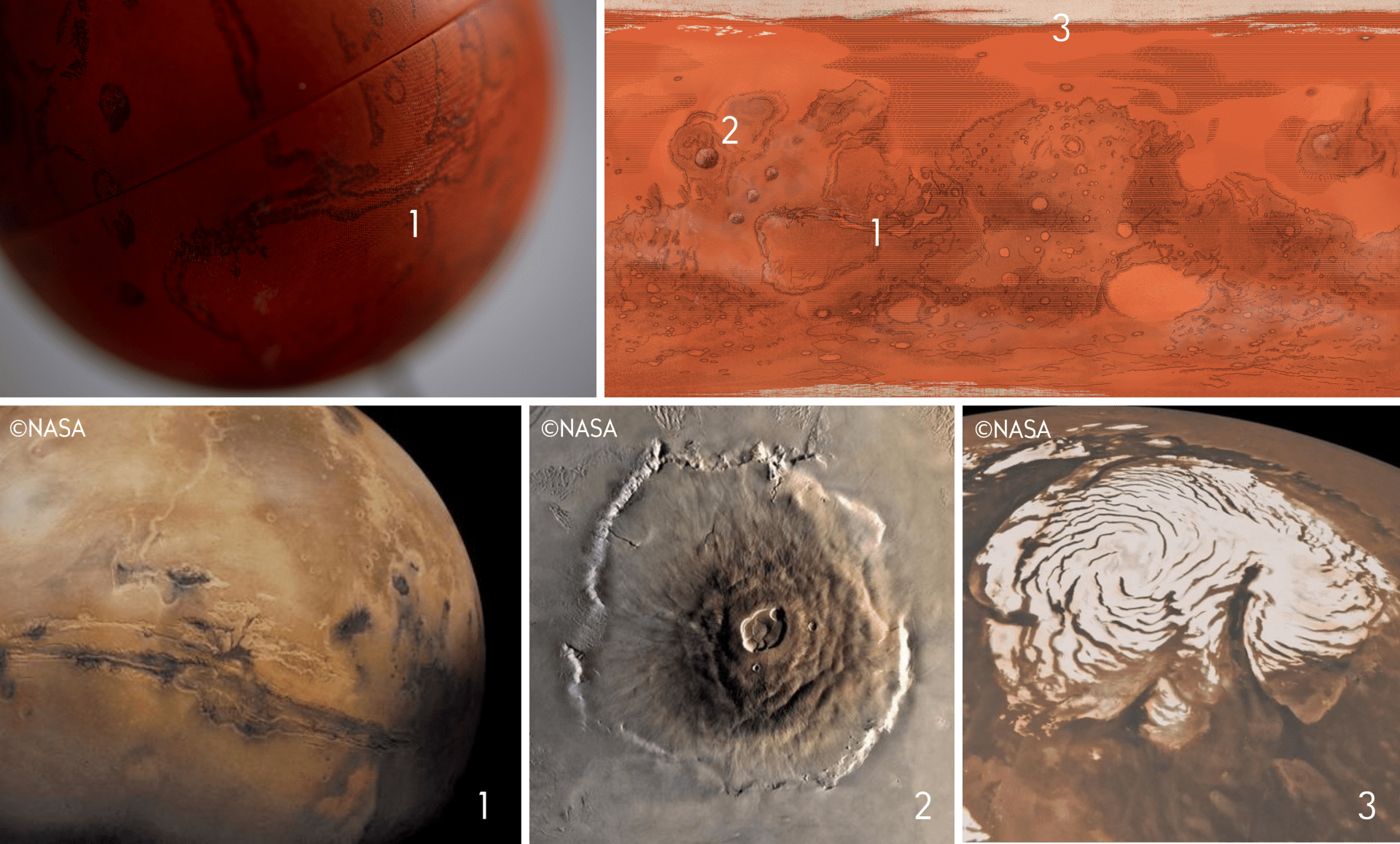
1. Valles Marineris 2. Olympus Mons 3. Polar ice cap
Mars: Photographs of Mars captured by the Mars Global Surveyor reveal the deep canyons, volcanic traces, and polar ice caps that spread across the red, iron oxide-covered surface of the planet.
These features, which are hard to see from photographs, have been illustrated for the Mars system variant of Moons Landscape, making them easier to see and understand.
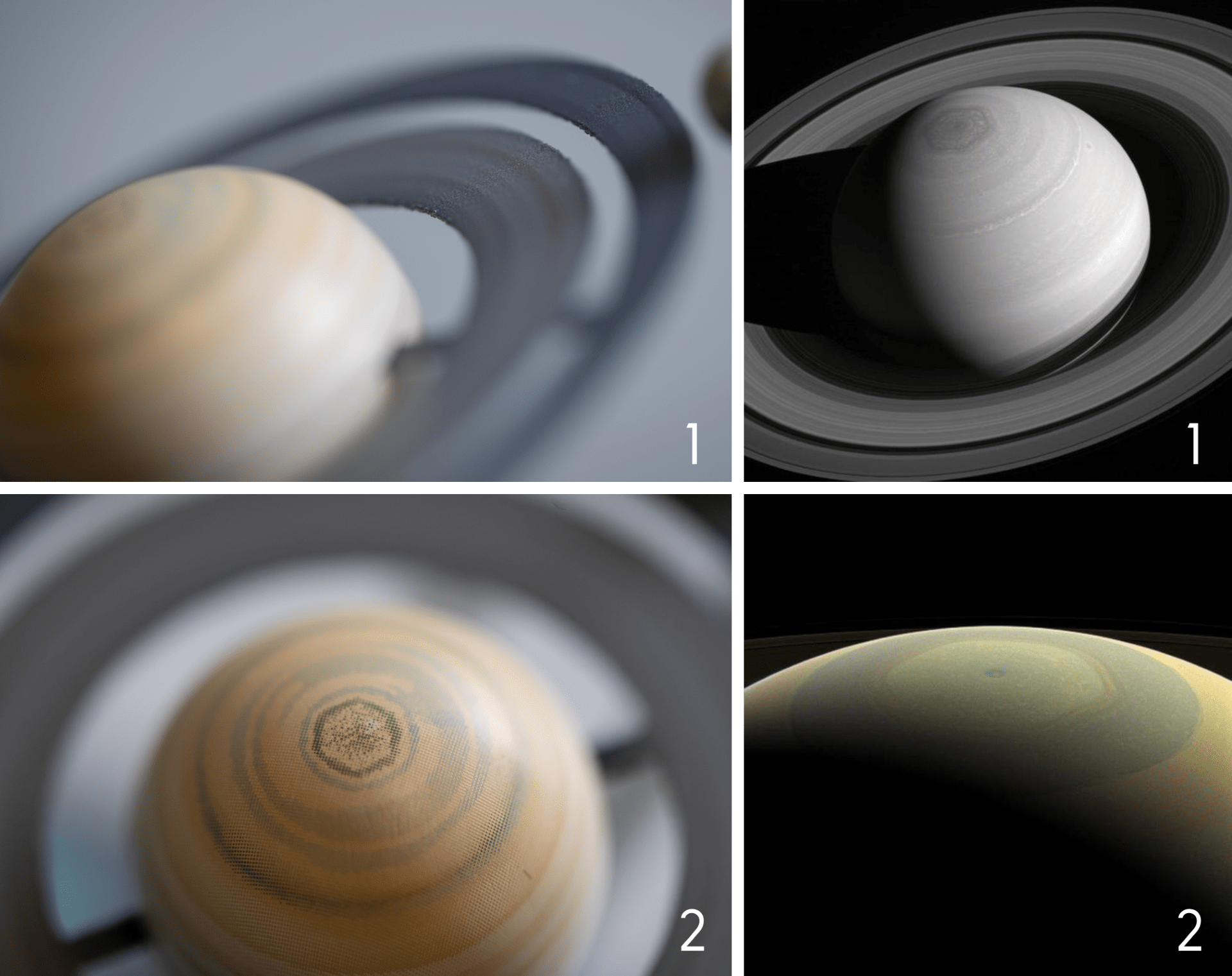
1. Rings that encircle the planet 2. Hexagonal polar clouds
Saturn: The Saturn system variant of Moons Landscape recreates the fascinating rings that encircle the planet, the hexagonal patterns of its cloud cover, and its flattened spherical shape.
We have made sure to recreate the beautiful, doubled form of the rings.
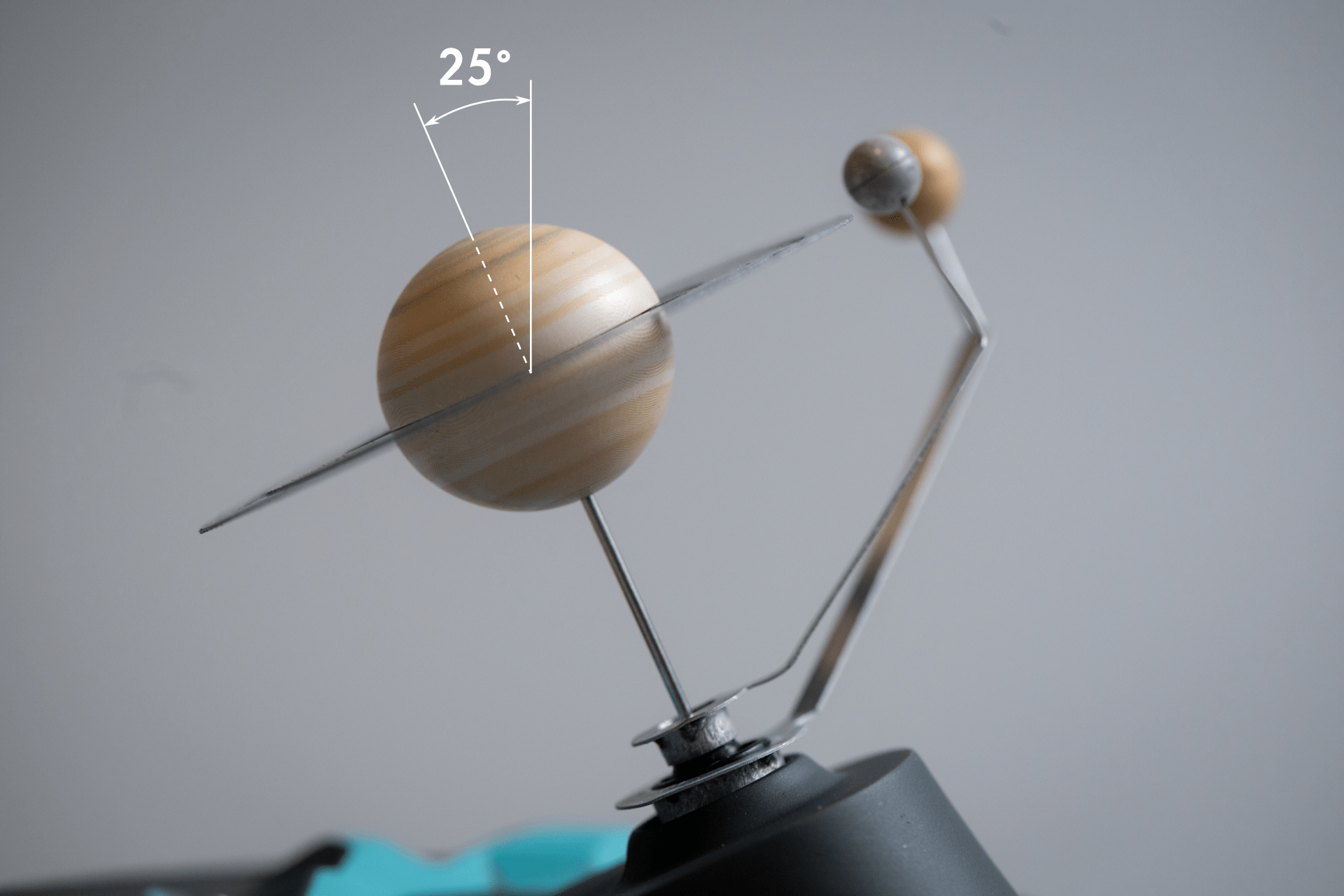
The axis of the planet has a tilt of 25°. The planet and its moons revolve on a tilted plane.

Rotating Mars and Saturn.
Moons | Richly-detailed moons orbit the planet
Phobos, Deimos – Mars system
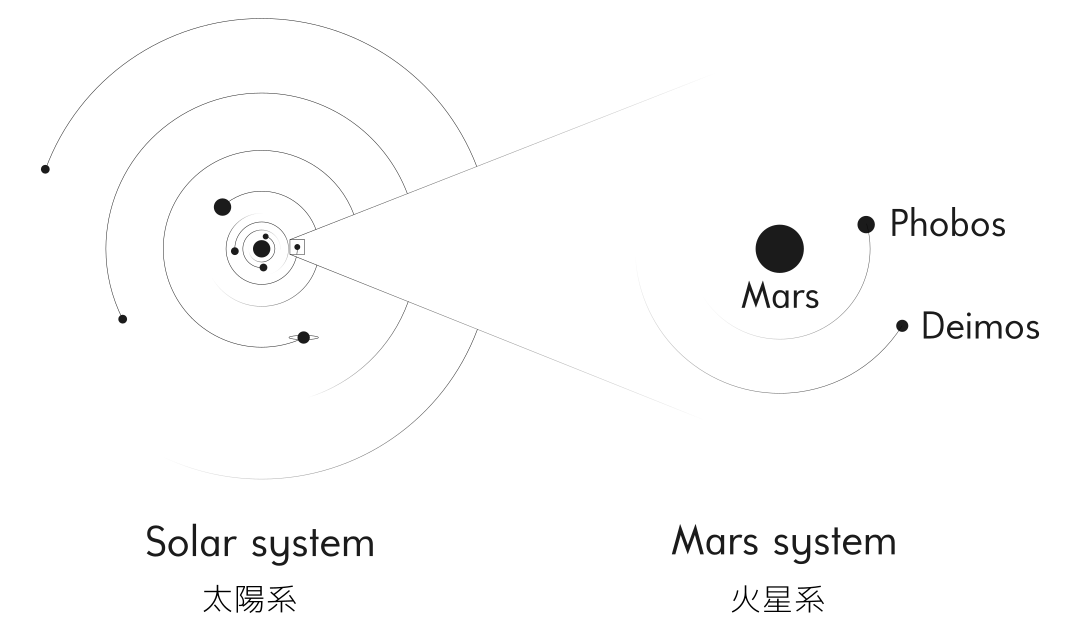
Mars is the fourth planet of the solar system. The Mars system is made up of the two moons Phobos and Deimos.
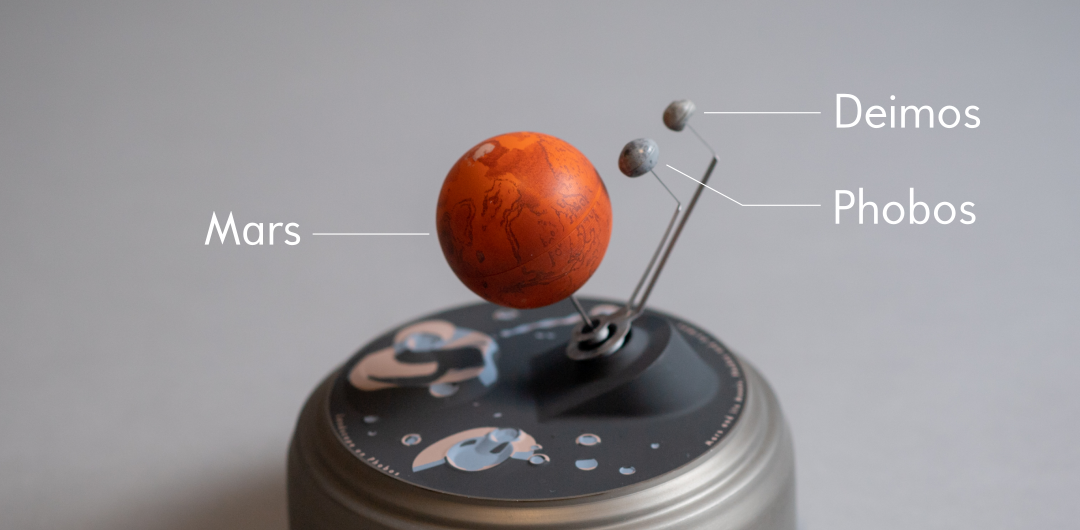
Though the origins of Phobos and Deimos are unknown, both have a rugged shape that marks them clearly as objects in space.
Moons Landscape carefully recreates the irregular shapes of Phobos and Deimos with a slight softening of the roughest edges.

Phobos:
Modeled with enhancement to depict Stickney crater.
One feature of the small body Phobos, which is 17 x 14 x 11 miles in diameter and orbits Mars three times a day, is the giant crater Stickney. Phobos is expected to either collide with Mars or break up to form rings around the planet fifty million years in the future.
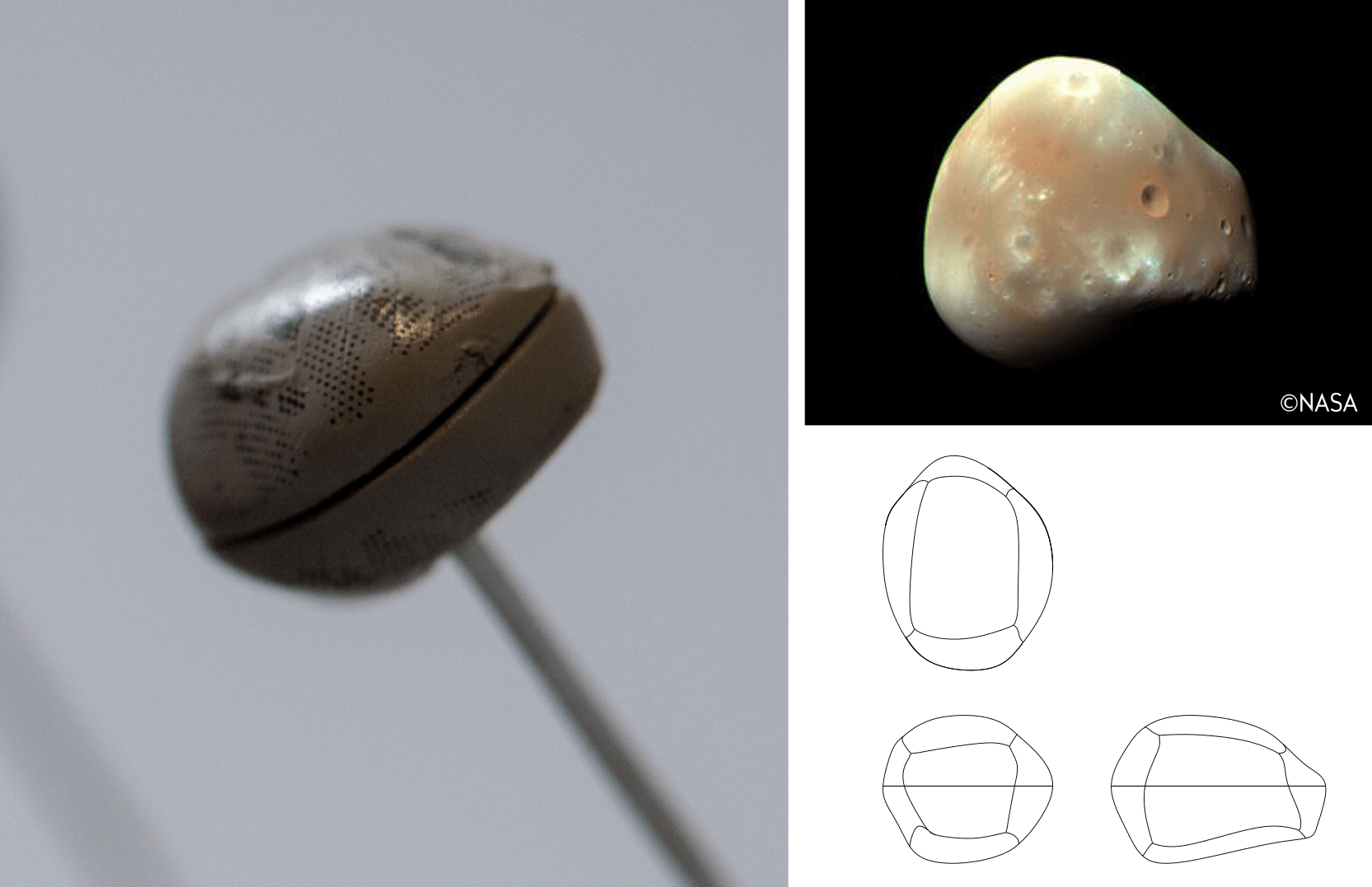
Deimos:
We have recreated its irregular shape.
Deimos, which orbits Mars on a slightly slower cycle than the rotation of Mars, is smaller than Phobos and has a slightly more regular and rounded shape. Its surface is covered with a 328 feet-thick layer of sand and dust known as regolith.
Titan, Rhea – Saturn system
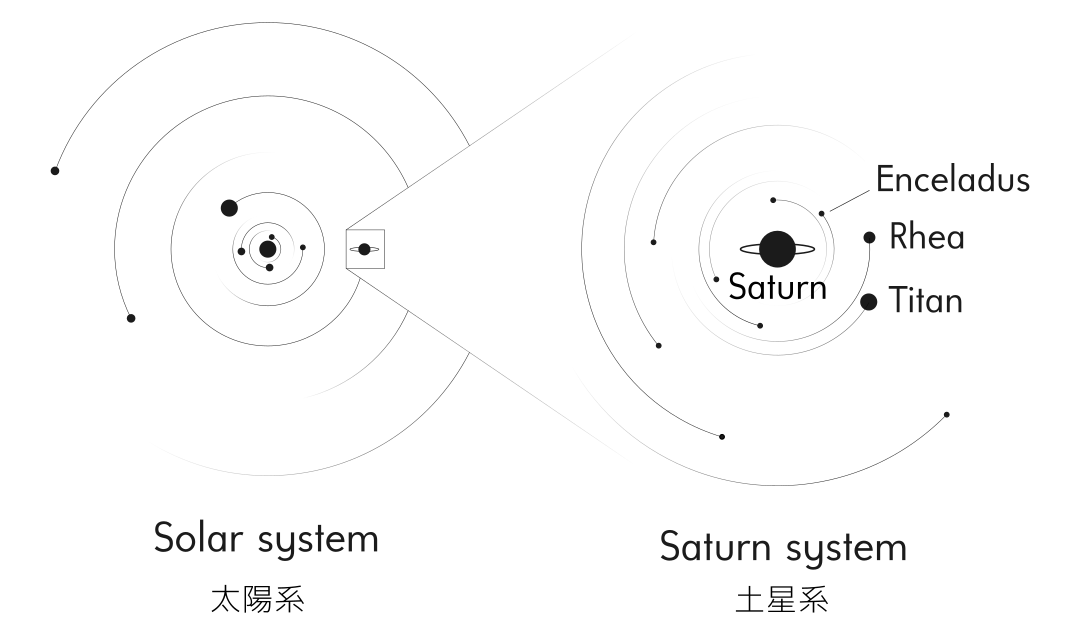
Saturn, the sixth planet in the Solar System, has a huge ring and about 150 moons in orbit around it, making up the Saturn System.
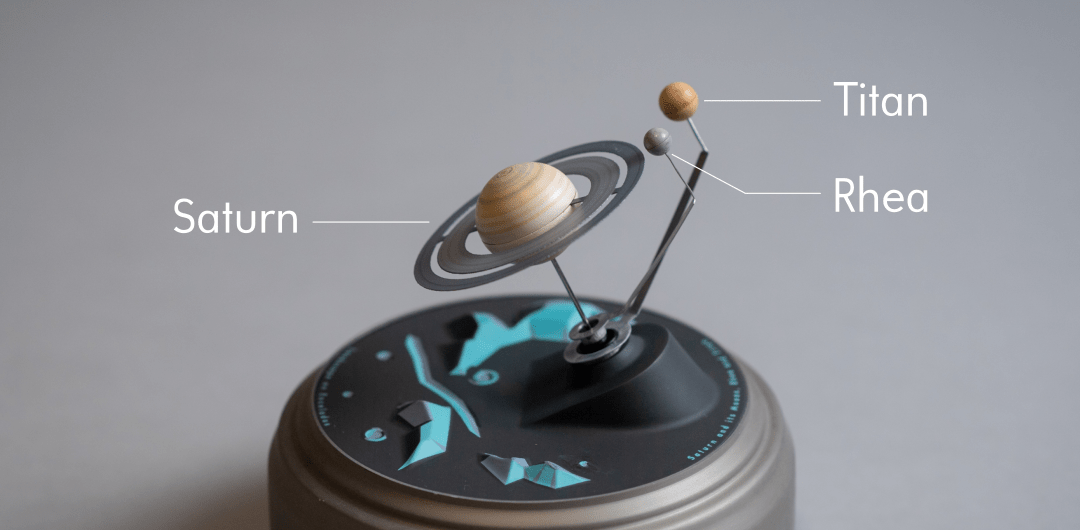
The Cassini – Huygens spacecraft, launched in 1997, explored not only Saturn itself but also the icy moons that encircle it. It identified lakes of methane on Titan and water erupting from the ice that envelops Enceladus.

Titan:
Titan is the second largest moon in the Solar System and the only one with an atmosphere that is larger than Mercury. Like Earth, its atmosphere is mainly composed of nitrogen, and its surface has rivers, lakes, and seas of methane and ethane.
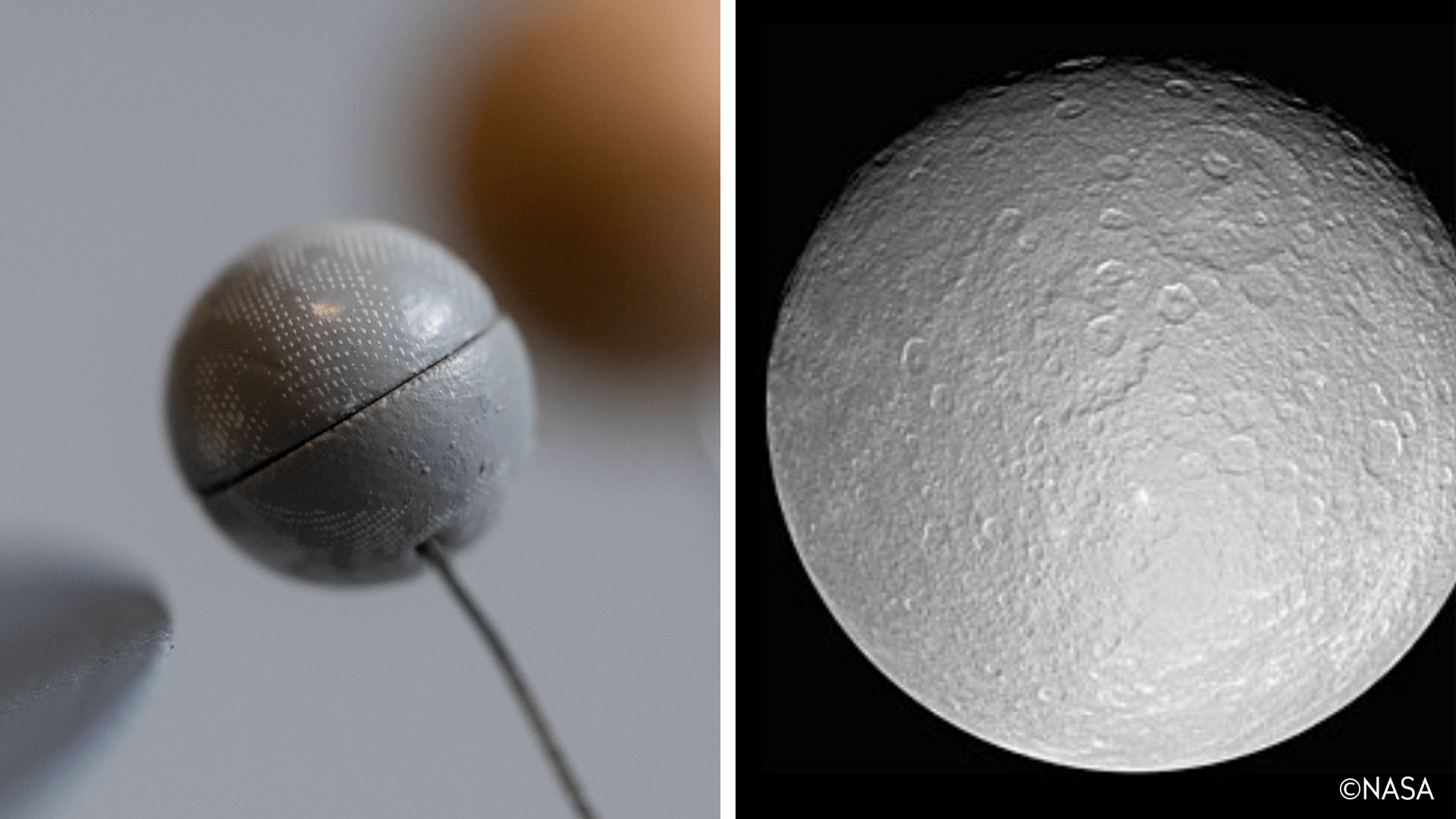
Rhea:
The second largest moon in the Saturn System after Titan. It is incredibly cold, reaching a temperature of only -174°C even in places lit by the sun. The surface is believed to be made of ice and rock.
Relief | A small diorama
The base of the diorama is built with a relief depicting the surface of moon. The craggy face of the body, which has a thin atmosphere, is rendered in three colors.

Phobos Relief: A relief depicting the surface of Phobos centering on Stickney crater.

Digital art of Mars as seen from the surface of Phobos
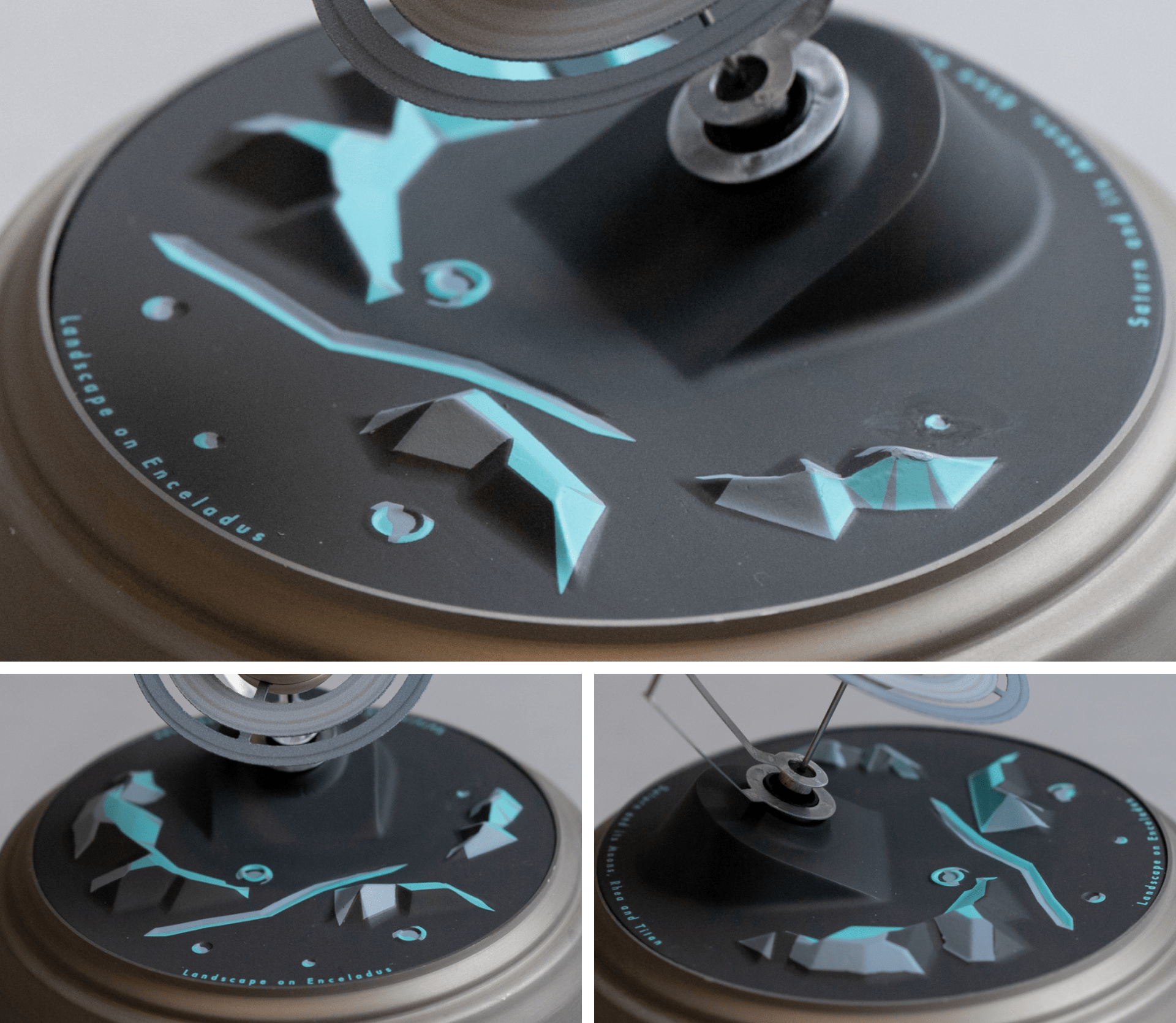
Enceladus Relief: A relief depicting the surface of the moon Enceladus, the icy moon that is famous for geysers that shoot material into outer space. It uses three colors to depict the mountains of ice and crevasses that crisscross the surface.

Enceladus
Build and Function
Quiet and smooth:
Uses a clockwork mechanism as its power source. Because the internal mechanism operates with a sweeping motion, it moves not only quietly but also smoothly. It won’t distract or disturb when placed on a desk or bedside table.
Lightweight and cordless:
It is light enough to carry in one hand and has no power cord, so it can be placed anywhere.
Longevity:
The simple and energy-efficient mechanism will operate for over six months on a single battery.


Different cycles:
Mars system and Saturn system use different gearing to reproduce each system’s unique rotational period. These are serious astronomical models with an error of no more than 3.4% in their rotational periods.
If you want to enjoy movement, the Mars system with its fast overall period is recommended; if you want to enjoy calmness, the Saturn system is recommended.
Mars system
| Mars – 1.1min | Phobos – 21s | Deimos – 1.4min |
Saturn system
| Saturn – 13s | Rhea – 2min | Titan – 8min |

Other Features
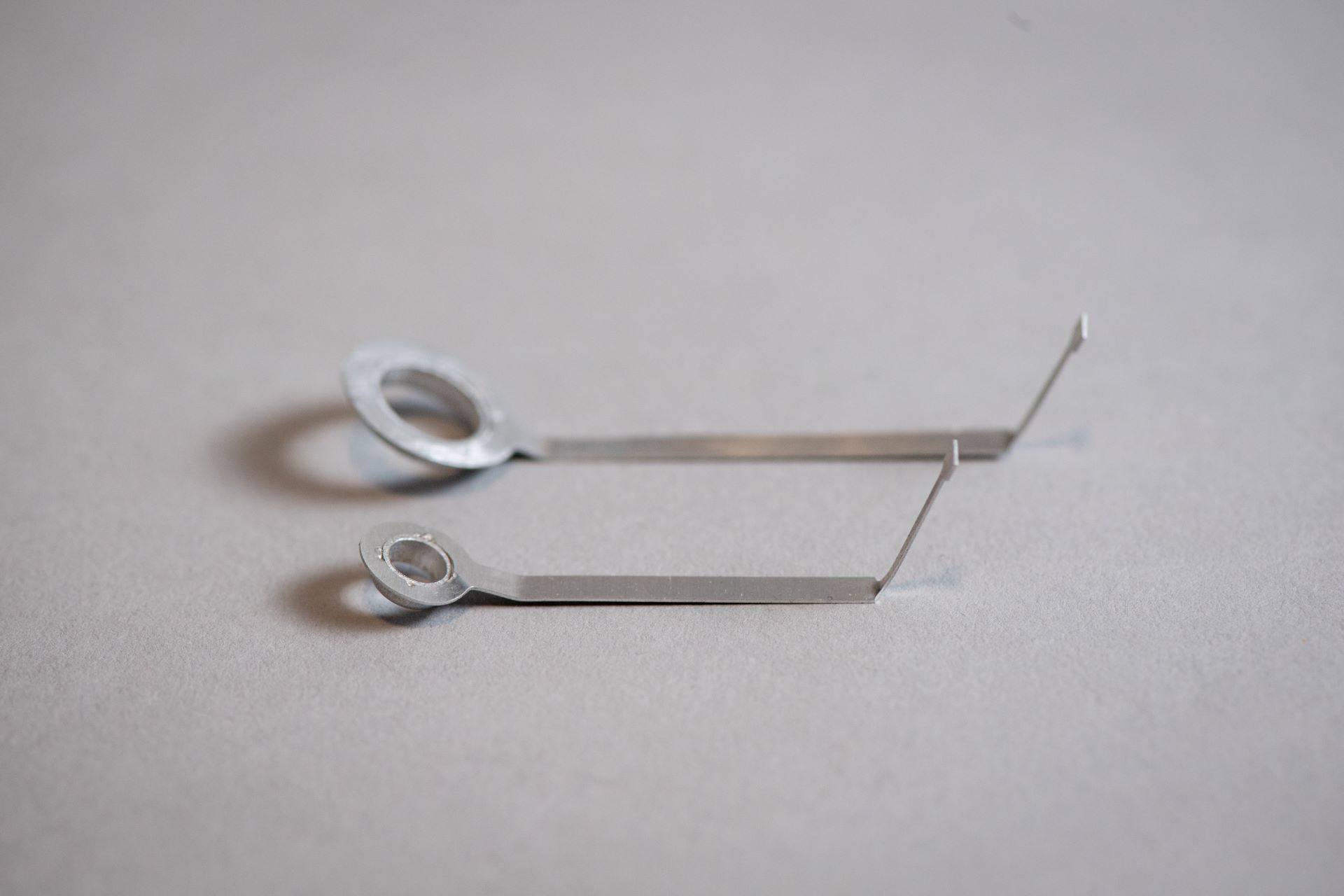
The aluminum hands are anodized for a matte finish that retains the look and feel of metal.

The steel case is also matte-coated to retain the look and feel of metal.
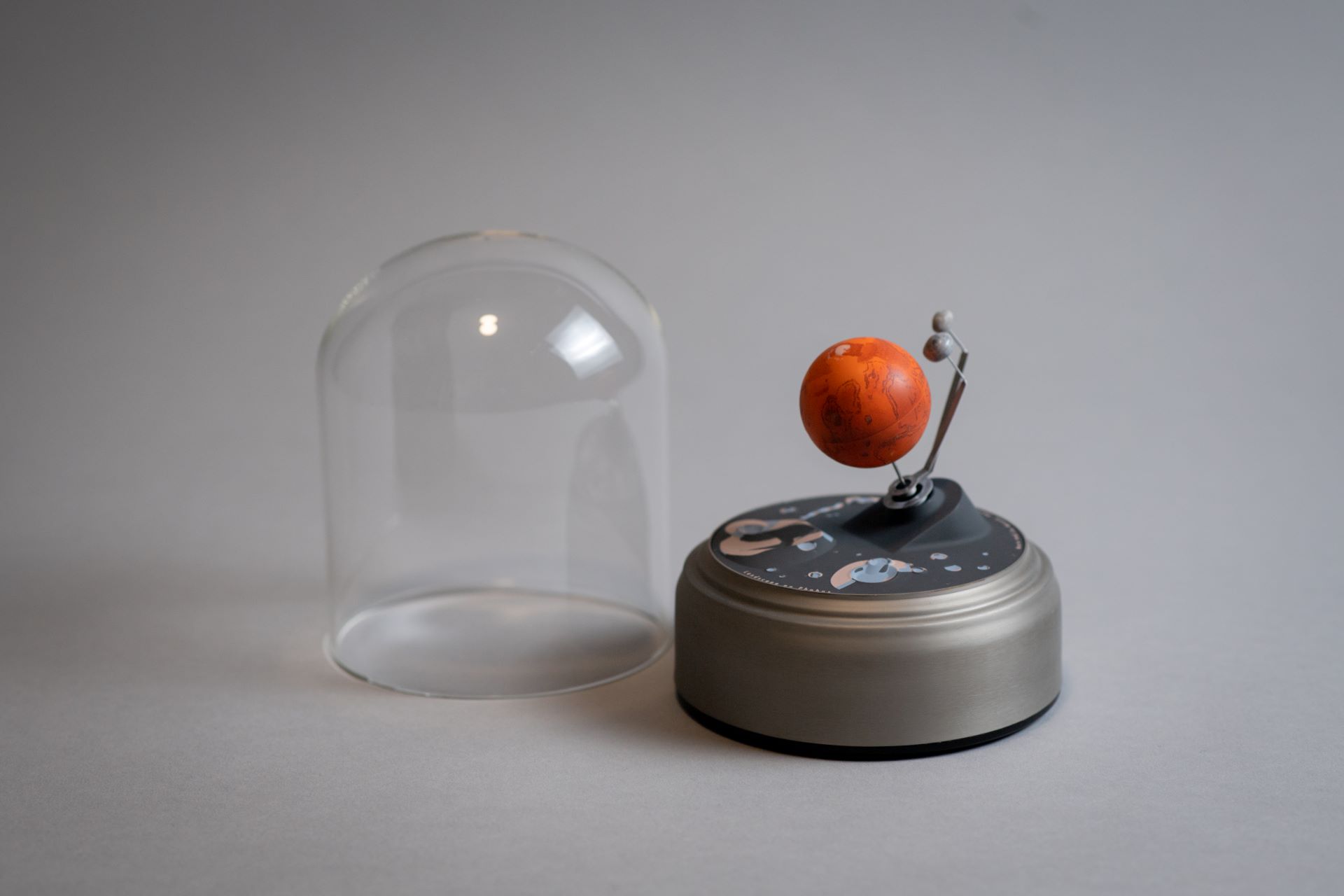
The astronomical model fits inside the Glass Dome as shown in the concept image. The Glass Dome can be removed.
Assembly

Once opened, the models can be assembled in a manner similar to DIY clocks.
1. The Glass Dome is removable. Please note that the Glass Dome may come off easily.
2. The hands are inserted into the moons. Please note that the small moons may be easy to misplace.
3. The planets and moons can be connected to the gears in the main model.
4. Place the Glass Dome to complete the diorama.
Installing/Replacing Batteries

For the installation of batteries, the clockwork mechanism is similar to that of a wall clock or table clock.
First, remove the Glass Dome. Then, remove the back cover and insert the battery. Please note the direction/polarity of the battery terminals.
Specifications
| Size | Φ4.3 × 5.5 in |
|---|---|
| Weight | Approx. 0.8 lbs. |
| Rotational period error | No more than 3.4% (relative to planetary rotation) |
| Battery | AA battery × 1 |
| Battery life | Approx. 6 months |
| Collections | Mars system, Saturn system |
Spacecraft Options
We have created a selection of different generations of spacecraft, including the Mars Global Surveyor, which mapped the surface of Mars, Pioneer 11, which surveyed Saturn, and Cassini-Huygens, which dispatched a spacecraft to Titan.
By replacing the existing moons with spacecraft, you can enjoy recreating the history of the exploration of the planets and their moons.
Because spacecraft will be produced using 3D printing and painted by hand, they will be available as a reward in limited quantities only. They will be packaged in small sample jars for shipment.
Those who have a 3D printer may also download the printable model files from our official site to print their own spacecraft. Link will be activated on July 5, after the Kickstarter campaign ends.
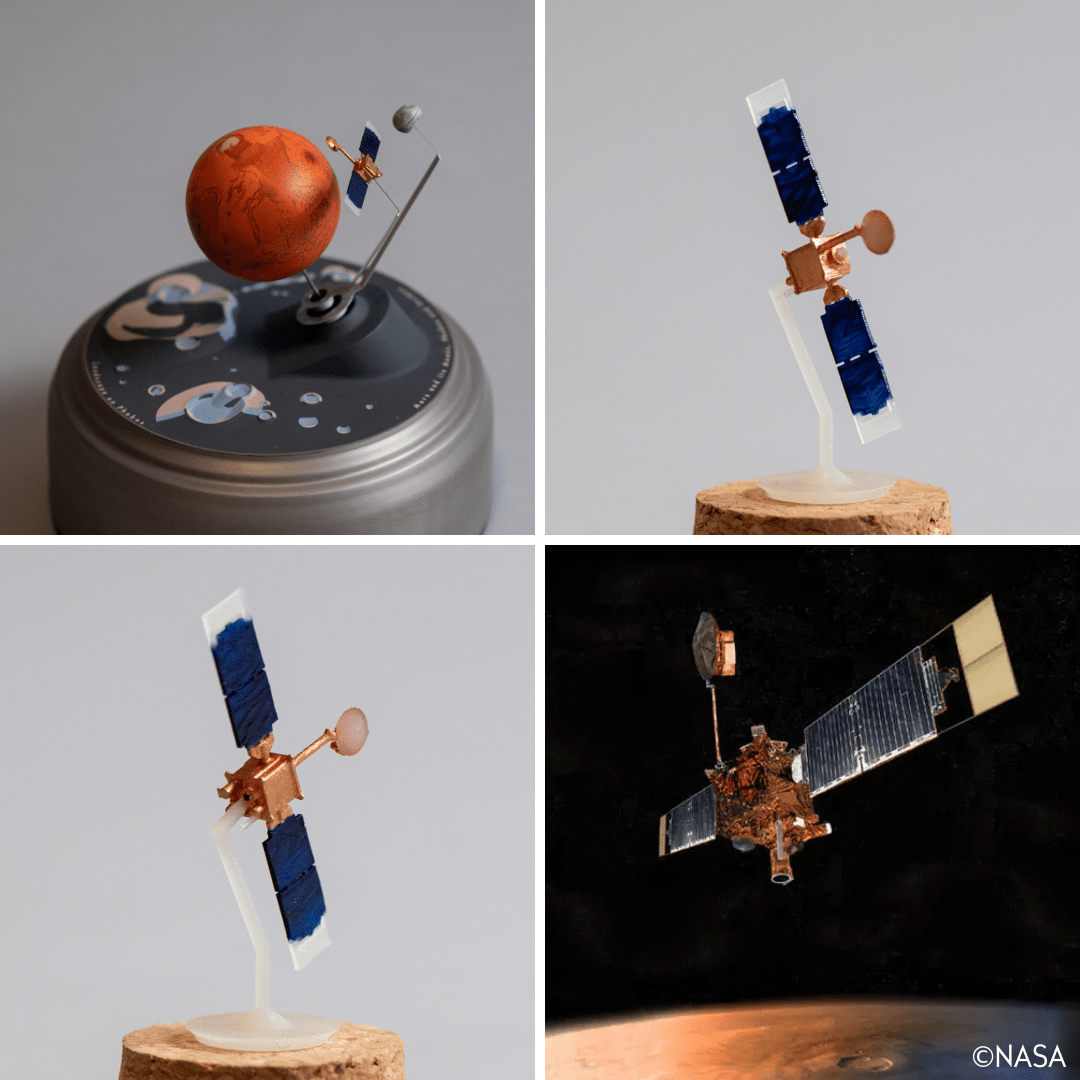
Mars Global Surveyor:
A Mars spacecraft launched by NASA. It created a map of the surface of Mars.
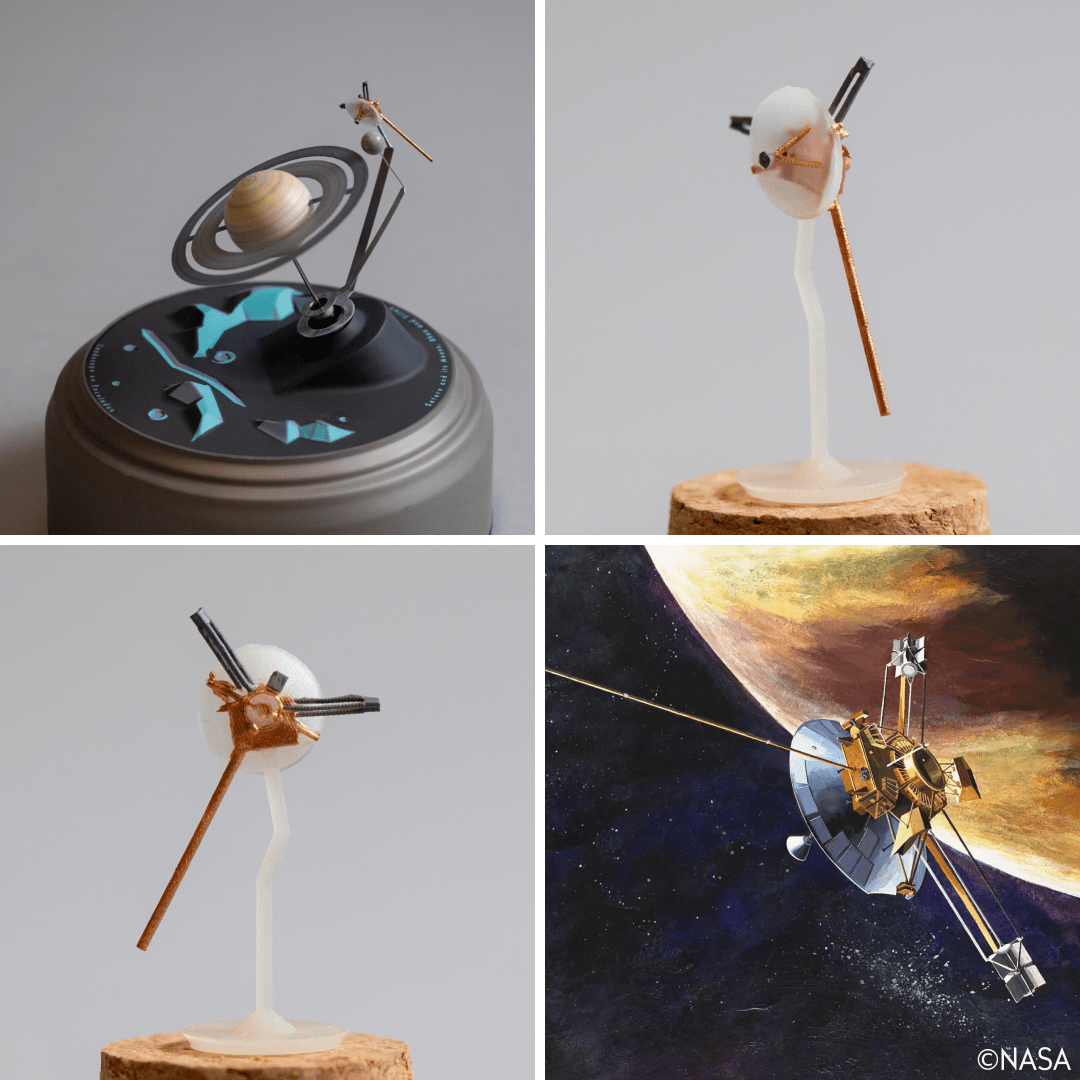
Pioneer 11:
A spacecraft sent to Jupiter and Saturn by NASA. The world’s first Saturn spacecraft, it and its sister-spacecraft Pioneer 10 carried a message from Earth to extraterrestrial intelligence.

Cassini – Huygens:
A Saturn spacecraft launched by NASA and ESA. After separating from Cassini, the Huygens probe landed on Titan to take measurements within the thick atmosphere.
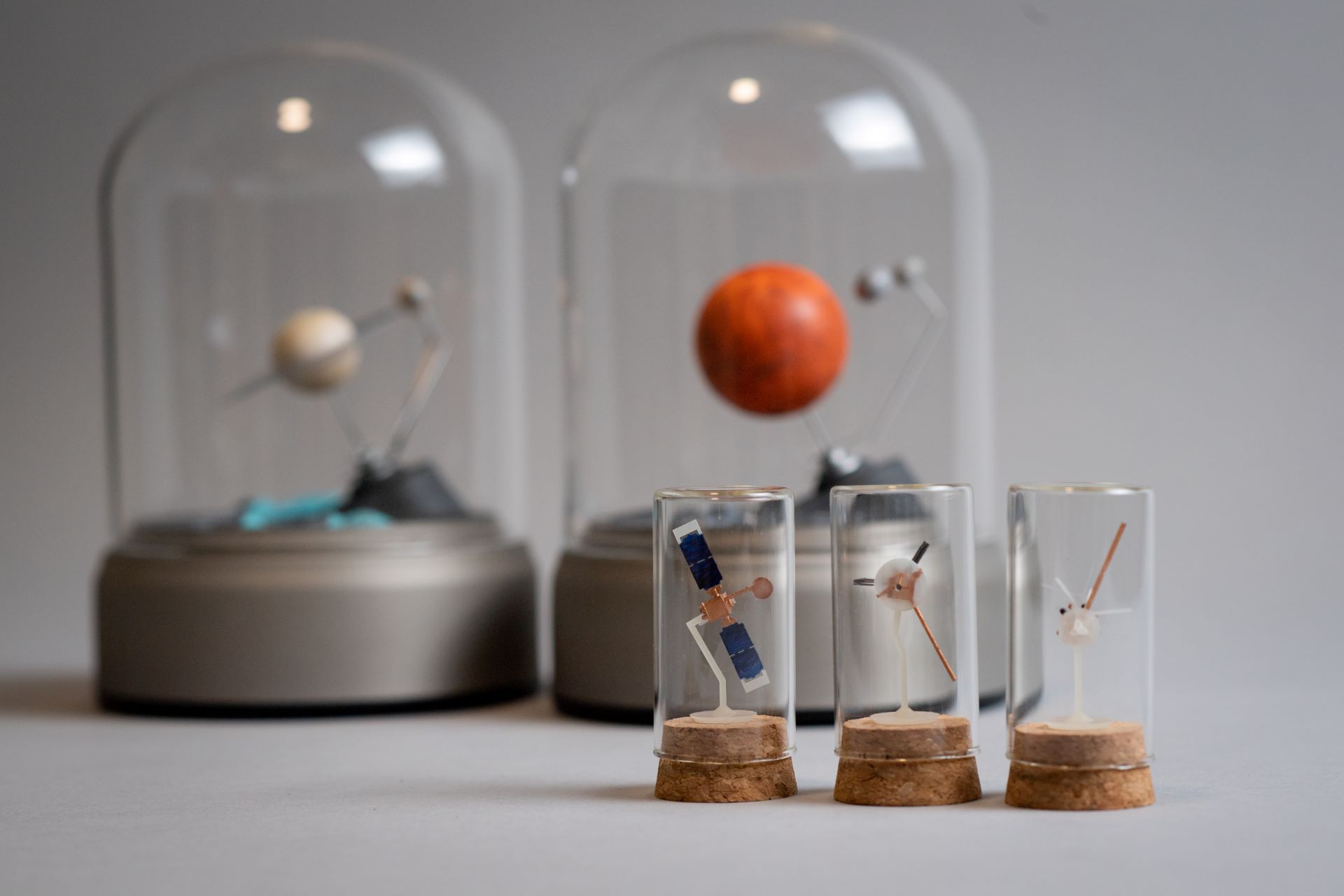
Spacecraft Options & Moons Landscape
Development Background
olenoides is based in Moriya, Japan, and has been creating Orrery called “Stellar Movements” for the Japanese market since 2019.
We wish to create astronomical models that can be enjoyed every day:
In 2021, the production of orrery had leveled off and we were considering our next product.
We decided to produce an astronomical model that can be enjoyed every day, in a way that we had been unable to with the orrery “Stellar Movements”.
We chose the theme of moon systems because we thought the resulting astronomical models would be neither too showy nor too humdrum. At the same time, we decided that a diorama style would increase the playability of the models.
When working on the theme of moon systems previously, we wished to create diorama-style designs that looked straight out of a museum display.
We felt that the design concept of bringing a slice of the extraordinary into the ordinary world would be similar to that of items like aquariums and terrariums, which lend touches of tranquility to daily life.
Wouldn’t it be nice to find such a charming product in a museum shop?
We wished to be able to place the model anywhere, without having to worry about plugging it in, like a table clock.
We decided to use a table clock mechanism as-is, but we were concerned if such a clockwork movement would be strong enough to move planets and moons, and wouldn’t be reassured until real testing proved it capable.
Rather than pasting on photographs, we wished to use something that could be appreciated more artistically.
So, over the course of two weeks in the summer of 2022, we created illustrations of the maps of the planets and moons.

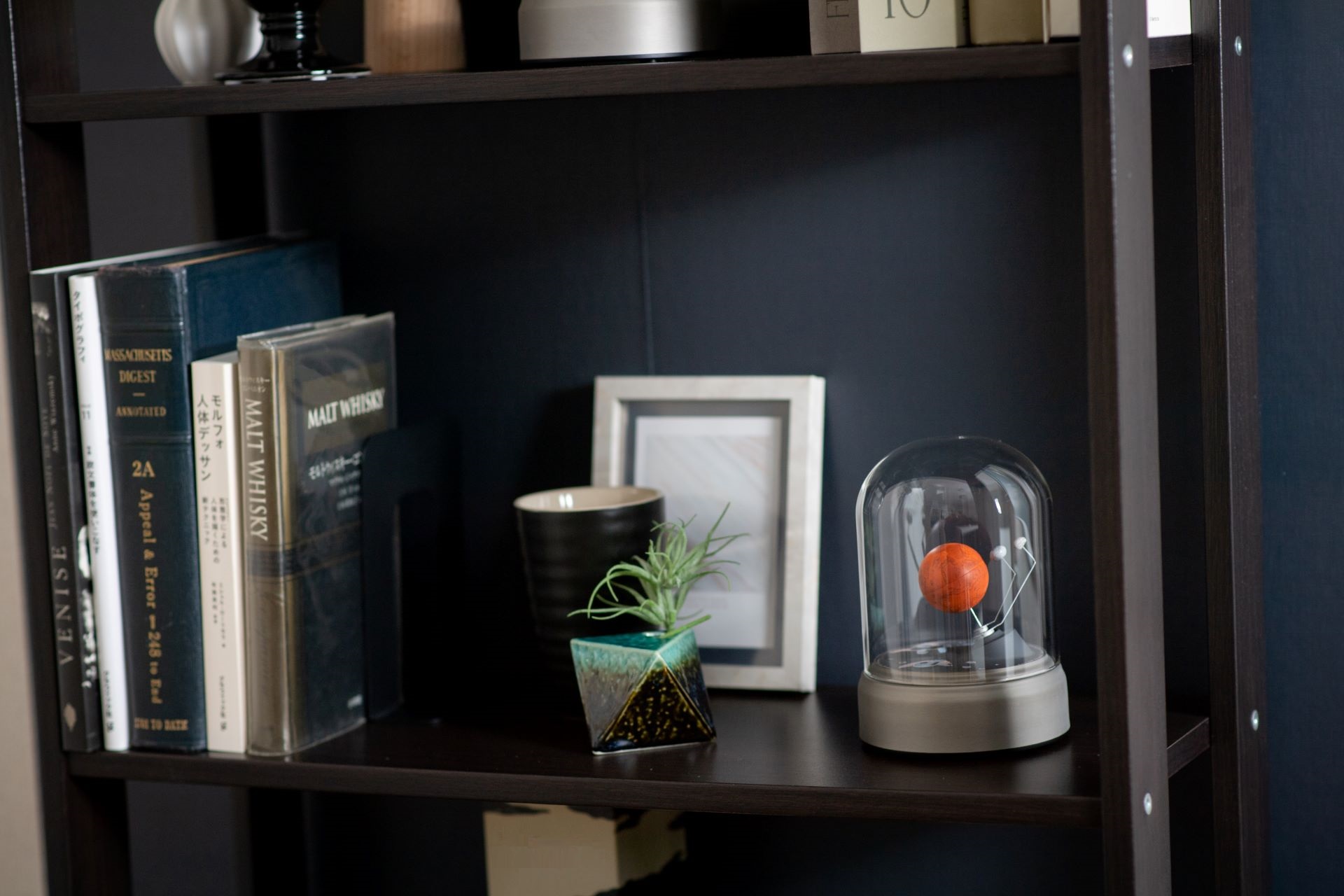
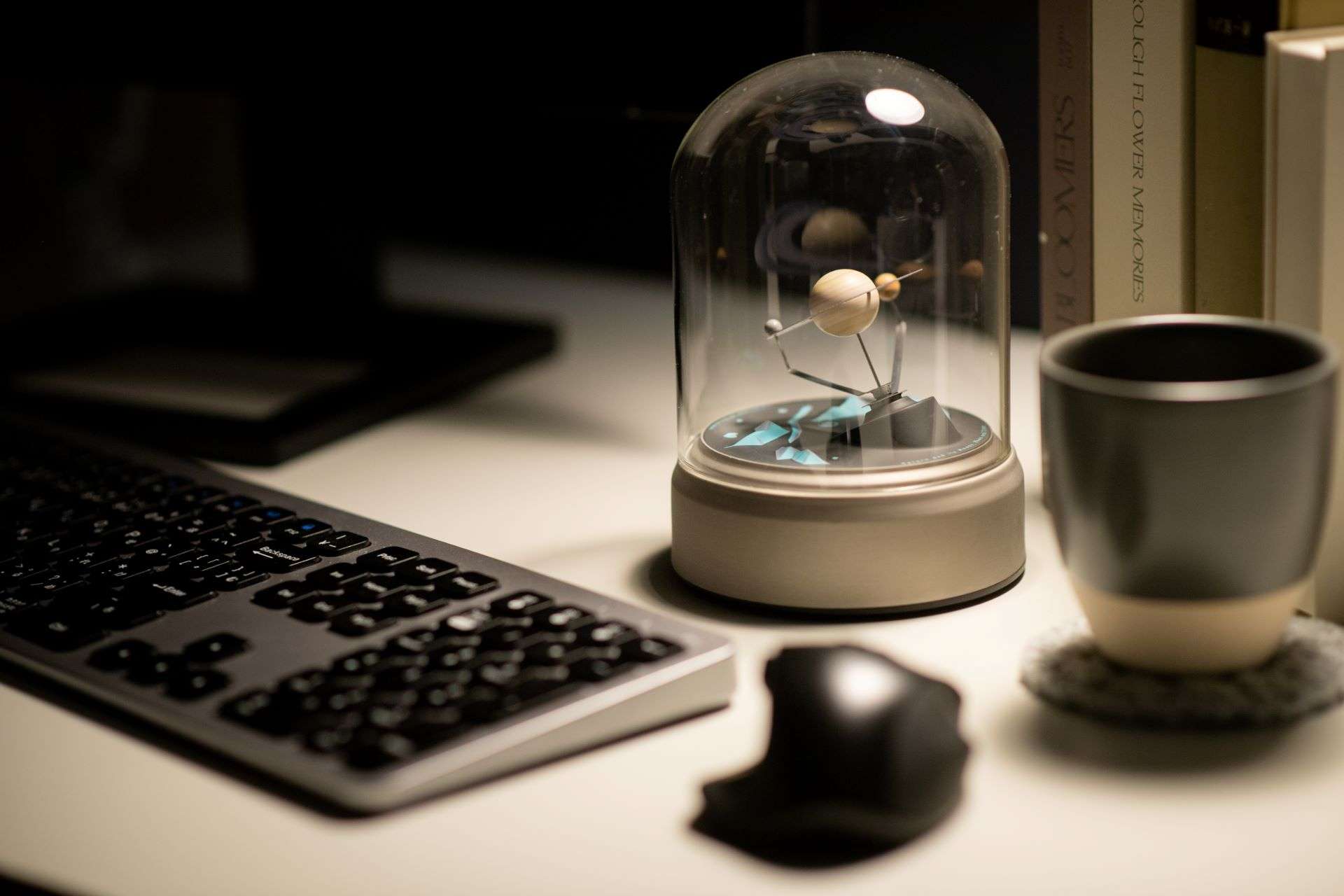
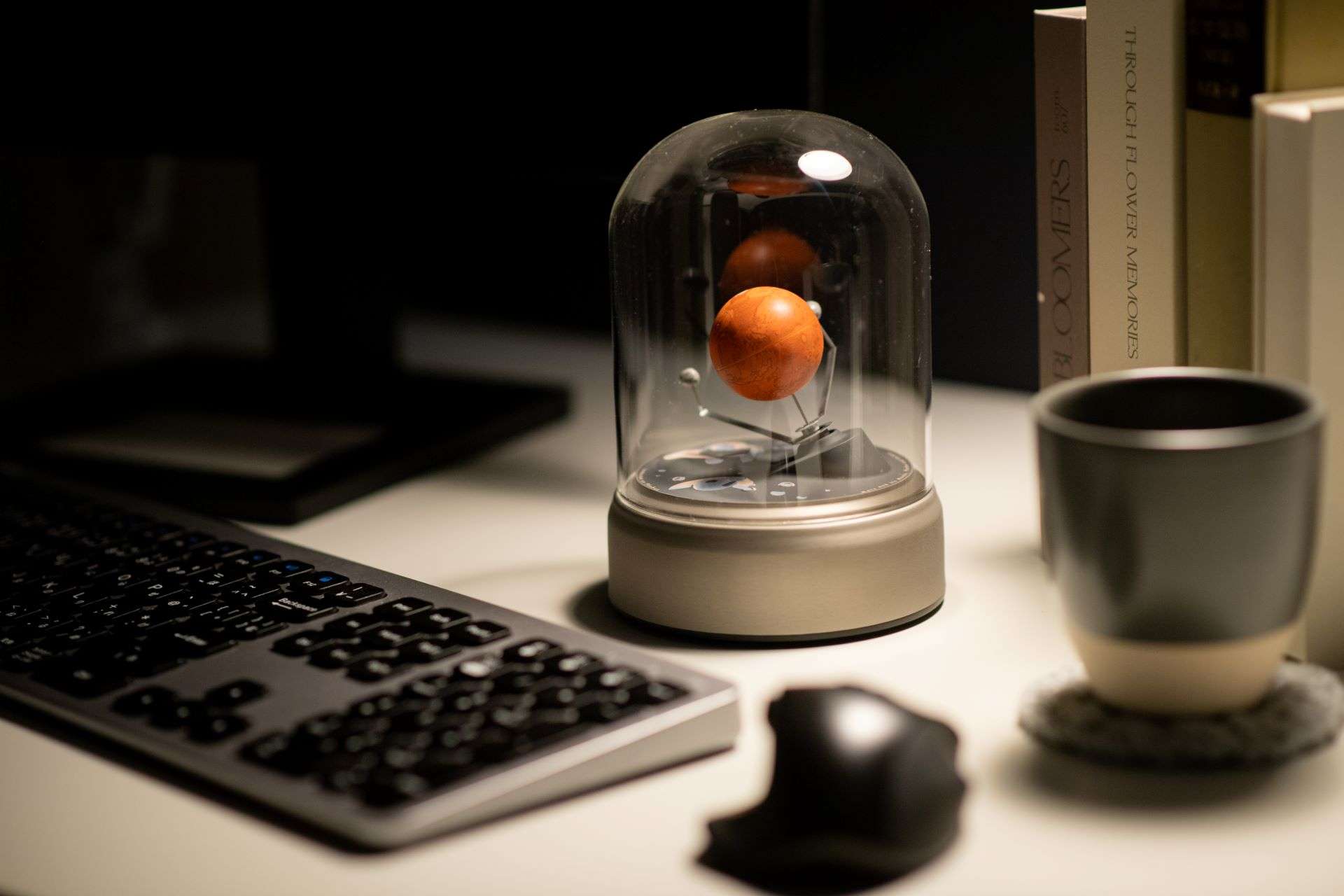

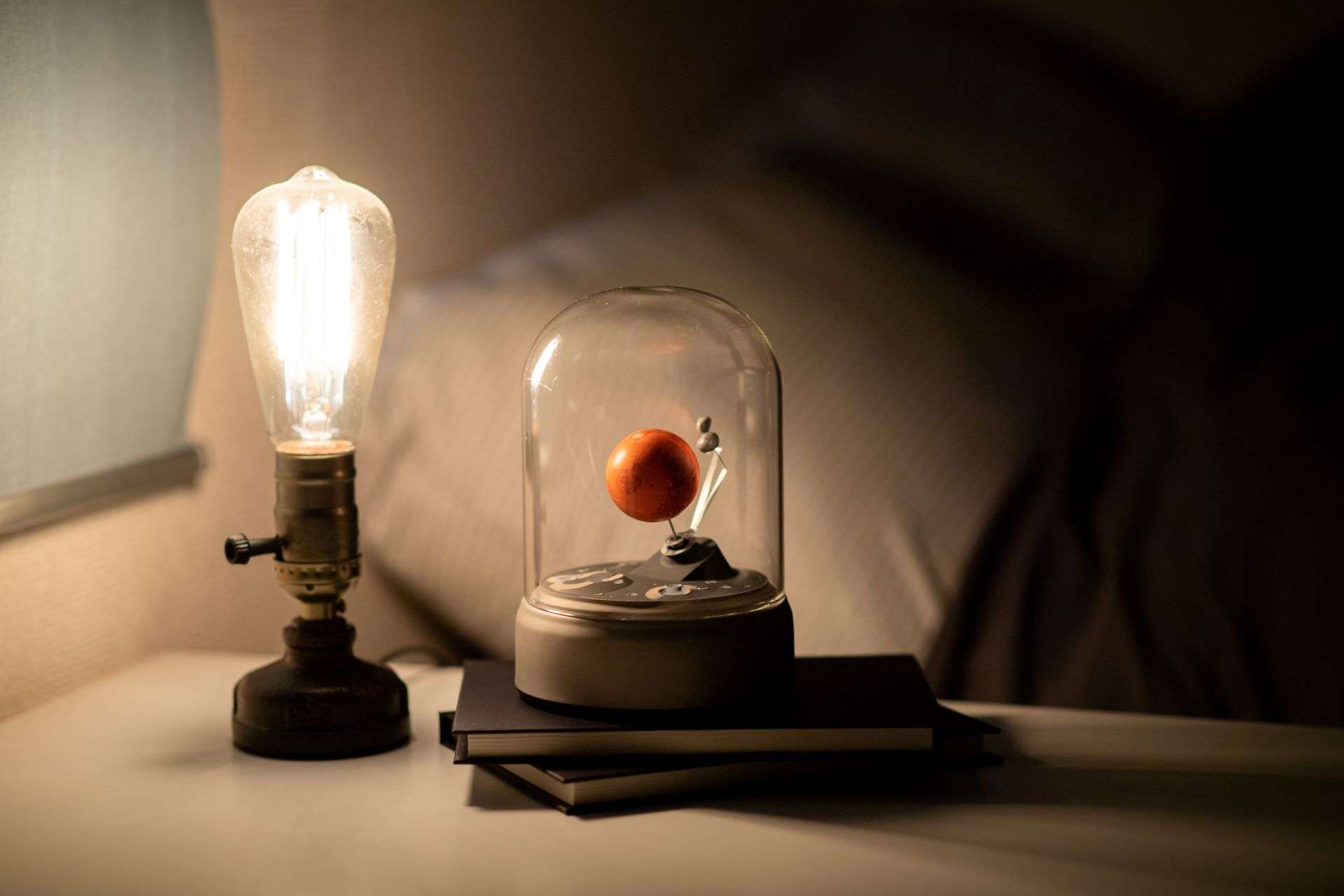
Future outlook for this project
We originally planned this project as a collection of four variations, including the systems of Earth, Mars, Jupiter, and Saturn.
In consideration of the budget and development risks, we decided to begin development with two systems, Mars and Saturn, and completed prototypes in the spring of 2023.
We will continue to fine-tune the details of the project.
We hope to add the paused Earth and Jupiter systems to the lineup if the Kickstarter campaign is successful and we are able to secure sufficient funding.
